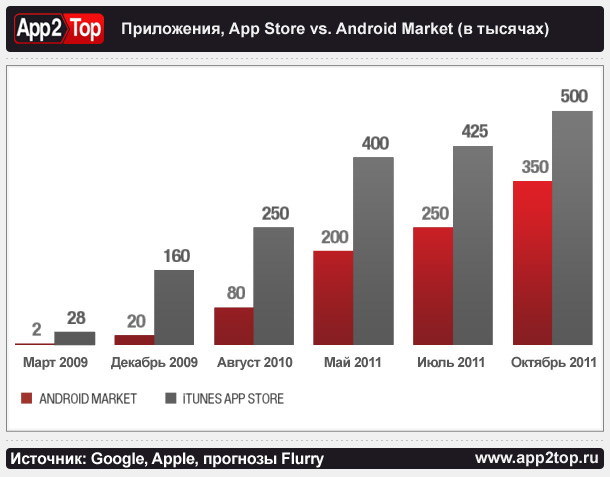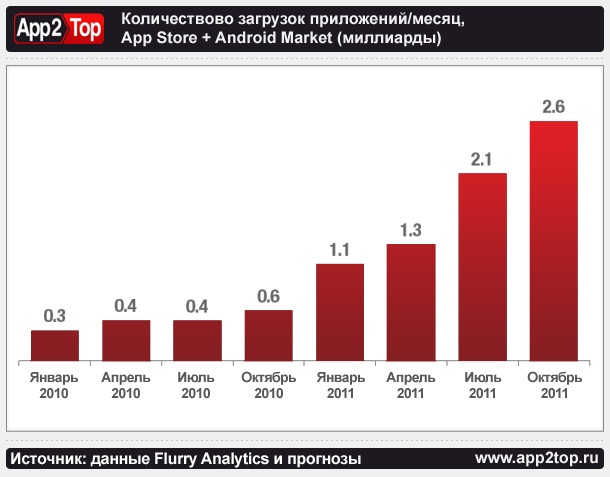 Apple and Google have launched a new computer era comparable to the PC revolution of the 80s and the Internet boom of the late 90s. Since 2007, more than 440 million devices on iOS and Android platforms have been activated; about a million new devices are activated daily. In parallel, a huge number of programs for these devices appear.
Apple and Google have launched a new computer era comparable to the PC revolution of the 80s and the Internet boom of the late 90s. Since 2007, more than 440 million devices on iOS and Android platforms have been activated; about a million new devices are activated daily. In parallel, a huge number of programs for these devices appear.
Given that the threshold for entering the market remains quite low, and distribution takes place via the Internet, developers continue to offer new applications at an incredible speed, fighting for the attention of the audience and trying to squeeze maximum money out of it. The graph shows how the number of available apps in the App Store and in the Android Market has grown:
At the same time, the number of downloads is also growing. According to Flurry analysts, in October 2011, the number of app downloads on iOS and Android platforms exceeded 2.6 billion. This is 4 times more than last year for the same period.
Taking into account the upcoming holidays, we can expect that more than 3 billion applications will be downloaded in December. On average, the number of downloads increases at a rate of +11.4% monthly. Against this background, it is interesting to see how often users access downloaded applications.
The graph below shows the percentage of users who continued to use the app for a year after downloading. For example, after three months, 24% of those who were initially interested in the application already turn to it. After six months, the number of such users is reduced to 14%, and a year later there are only 4% of them. To get these conclusions, Flurry analyzed 25 apps, downloaded a total of 550 million times.
The time people are currently spending on apps is growing almost as fast as the number of downloads. And although, as a rule, everyone says that the main problem of developers / publishers is how to make their product noticed, Flurry specialists believe that it is much more important to retain and return those who notice.
One of the few ways to get access to a wide audience is to get into the top of the app store. An application that is at least in the top 25 has every chance of getting a large number of downloads. But tops are a great tool for getting new users, but there are much fewer methods that would stimulate those who have already installed to leave the store and click on the icon on the screen of their smartphone and tablet.
According to Flurry analysts, the industry will develop precisely in the direction of developing tools for user retention, i.e. the attention of developers will have to shift from a quantitative criterion to a qualitative one.



